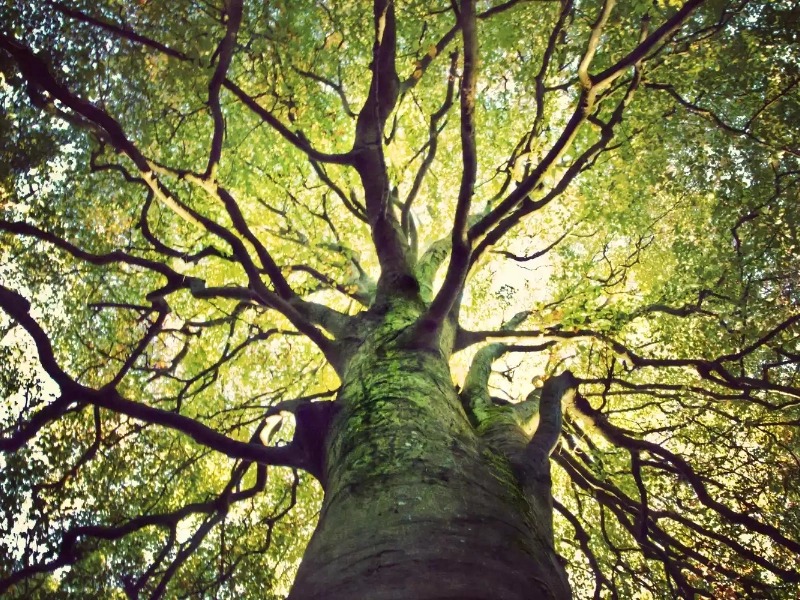
9 Amazing Fractals Found in Nature
By • Last Updated5. The Fractal Nature of Tree Branches: A Marvel of Natural Architecture

Trees, with their intricate branching systems, are some of the most stunning examples of fractal geometry in nature. Fractals—patterns that repeat at various scales—find ideal expression in tree structure and growth. The trunk branches into larger limbs, which subdivide into smaller branches and twigs in a consistent, repeating pattern that creates a self-similar structure. This fractal pattern is built on the simple “Y” shape formed at each branching point, recurring throughout the tree’s form. Beyond aesthetics, this fractal structure is functionally essential: the branching maximizes surface area for leaf growth, optimizing sunlight capture for photosynthesis, and provides mechanical stability to withstand forces like wind.
Interestingly, the fractal nature of trees extends to their root systems, which often mirror the above-ground branches to form an equally intricate, self-similar network below. This symmetry between visible and hidden parts illustrates how fractal geometry shapes the tree’s design and function. Tree branching patterns emerge through a complex interaction of genetic and environmental factors. At the molecular level, plant hormones, particularly auxins, regulate branch growth. These hormones influence growth direction and help control new branch formation through a process called apical dominance: auxins from the branch tips inhibit the growth of buds below, and as auxin concentration decreases, lateral buds activate, creating new branches. This hormonal guidance produces the characteristic fractal structure of tree branches.
Environmental conditions also play a crucial role. Light availability, one of the most influential external factors, drives trees to grow toward optimal sunlight. This phototropic response affects the angle and direction of branches, shaping the tree’s overall canopy. Wind, temperature, and nearby trees further influence branching patterns; trees in dense forests, for example, have different branching structures from those in open spaces. This developmental plasticity enables trees to adapt to local conditions, resulting in varied patterns across species and habitats.
Fractal branching isn’t only beautiful but is vital for maximizing solar exposure. Photosynthesis, the process of converting light into chemical energy, relies heavily on sunlight. By distributing leaves throughout a three-dimensional space, trees optimize their light collection and minimize self-shading. As the tree grows, new branches and leaves fill canopy gaps to ensure that lower branches aren’t completely shaded by those above. This structure is evident in the spiral patterns that often organize branches and leaves, ensuring a more even sunlight distribution. Additionally, heliotropism—the tree’s ability to adjust leaf angle in response to light changes—enhances this design’s efficiency. Some species can even shed branches or leaves that don’t receive enough light, redirecting resources to more productive areas of the tree.
The fractal branching pattern also contributes to structural stability, enabling the tree to support extensive foliage while maintaining balance. This is particularly crucial for trees in windy environments, where the distribution of weight and wind resistance across branching levels helps protect them from storm damage.